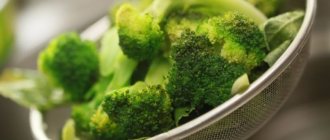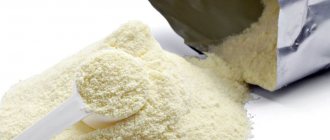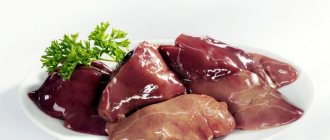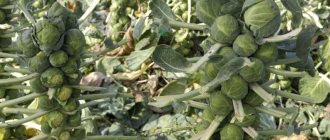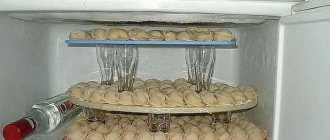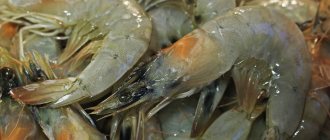Cabbage is good because it ripens quickly, and at the same time does not require special attention from the gardener when growing. In addition, it has a pleasant taste, therefore, it is widely used in cooking. Moreover, Chinese cabbage is beneficial for the human body. Therefore, everyone who grows it wants to preserve it longer.
As with storing other vegetables, there are secrets and nuances here, without which cabbage cannot be preserved for a long time. And further in the article, we will try to understand this matter. Let's go?
Which Chinese cabbage is best stored?
Beijing cabbage can be classified into early-ripening, mid-ripening and late-ripening according to the ripening period. Mid-late and late varieties are best suited for storage. It is also important that the cabbage is grown in Russia (regions are important).
The best varieties of Chinese cabbage:
- Magician;
- Princess;
- Russian size;
- Half-headed;
- Asten;
- Vorozheya;
- Wineglass.
You can read more about Chinese cabbage here in the article.
Choosing a variety for storage
If you want to grow Chinese cabbage for winter harvesting, you should remember that different varieties have different shelf life. Thus, early hybrids ripen most quickly and are distinguished by juiciness and tenderness, but are not suitable for long-term storage, since they quickly wither and rot. For winter preparations, mid- and late-ripening varieties are considered optimal, for example:
- "Russian size";
- “Princess;
- "Magician";
- "Vorozheya".
Many gardeners advise growing hybrids that were bred by domestic breeders, since they take into account the peculiarities of the local climate. The Dutch Peking varieties have also proven themselves very well: they are resistant to bolting and tolerate cold spells and temperature changes well.
How to harvest cabbage and when
Chinese cabbage must be harvested on time, otherwise it will not be stored. Thus, we solve the question “how to store Chinese cabbage”. Here, in the middle zone, cabbage is harvested in September (late) or October.
The main thing is to have time to harvest before frost. Otherwise, Pekin will not be stored. Also, make sure that the heads of cabbage for storage are formed and dense, not injured, not diseased, not spoiled by pests, and of course not frozen. Important
. The weather on the day of harvest should be dry (no rain) and warm (no frost).
On a note!
It is not recommended to strip Chinese cabbage too much. Here, a maximum of 1 - 2 outer sheets can be removed. But this is if they are damaged. Also, make sure that the forks are dry on the outside and inside. By the way, you absolutely cannot wash it. Here, this is the peculiarity of Chinese cabbage leaves, when the moisture inside the cabbage cannot be removed.
Storage conditions for Chinese cabbage
Any Beijing variety, both winter and summer varieties, have a delicate structure. Therefore, storage conditions play a key role for them. Here, any deviations immediately lead to damage to the product. Therefore, the question “how to store Chinese cabbage” is important.
Optimal conditions
The storage temperature is considered to be + 0 - 2 ° C, while the air humidity should be within 95%.
Important
. At temperatures above + 2 °C, rapid germination of cabbage is usually observed. But, at negative temperatures, we will observe freezing of vegetables.
On a note!
It is strictly forbidden to have apples lying nearby. And this is because they emit ethylene, and it promotes wilting (accelerates the spoilage process).
Good ventilation and complete darkness are important. Otherwise, there will be rapid spoilage of vegetables. This should under no circumstances be neglected, because Chinese cabbage is a delicate vegetable.
TECHNOLOGY FOR PRODUCTION OF CHINESE CABBAGE / Cultivation of Chinese cabbage
Peking cabbage in Russia is one of the rare types of cabbage crops. At the same time, in Eastern countries, the USA and Western Europe, it is cultivated very widely. Thanks to the success of breeding, the demand for Chinese cabbage is constantly growing. It has become one of the common food products and is used both fresh and for fermentation and home cooking. The emergence of long-term hybrids makes it possible to extend the period of crop consumption to 4-6 months. Thanks to its nutritional and dietary advantages, Chinese cabbage is promising for expanding the range of cultivated vegetable crops in the Rostov region.
2.2. State and prospects of Chinese cabbage production
Chinese cabbage is one of the oldest cultivated plants in China, from where it spread to other East Asian countries. Cabbage is also popular in North America and Western Europe, where it has been cultivated for more than 100 years. In terms of economic importance in some regions of East Asia, it ranks first among vegetable crops and is the main source of vitamin C in winter.
In Russia, the main production is concentrated in the small-scale commodity sector - in peasant (farmer) farms and households. The areas occupied in commodity production in the Rostov region exceed 40 hectares.
Thanks to a very short growing season (from 40 to 120 days), high yield (from 30 to 60 t/ha), and high commercial and dietary qualities of the products, Chinese cabbage is becoming increasingly popular. This popularity has increased, including due to the success of selection. New hybrids are suitable for long-term storage of up to 4-6 months. Due to its nutritional value, Chinese cabbage can be considered an important source of vitamins, minerals, essential amino acids necessary for the normal functioning of the human body, especially in the off-season. The vitamin C content exceeds 27 mg.
In Asian countries and Russia, the main part of the product is used for pickling and pickling with other types of vegetables (kimchi), consumed fresh and stewed.
2.3. Biological features of Chinese cabbage. Nutritional properties of Chinese cabbage.
Chinese cabbage is a member of the cabbage family (Brassicaceae (Barnett) and belongs to the genus cabbage (Brassica). There is no consensus on the species in the world. In the West, it is considered a subspecies of turnip (Brassica rapa L.Em.Metzg. ssp.Pekinensis (Lour) Hanelt) In Russia it is distinguished as an independent species - Brassica pekinensis (Lour) Rupr.
In the conditions of the South of Russia, Chinese cabbage is an annual plant and shoots easily. This biological feature makes it difficult to grow both in the early spring and in the hot summer, when plants easily and quickly begin to bolt.
Bolting accelerates under conditions of low positive temperatures (vernalization) and long days. Exposure to low temperatures (2-8 °C) during the period of seed germination leads to bolting even before the head is laid, and exposure to high temperatures after picking leads to the same result; The later the exposure to high temperatures begins after picking, the more leaves are formed.
Normal development of the head of cabbage is possible if the plant has about 60 leaves before flowering. If seedlings are grown at temperatures above 20 °C, bolting slows down even at low temperatures (dearization). A long day promotes bolting only after incomplete vernalization; after prolonged exposure to high temperature, day length does not affect bolting. Modern breeding hybrids of Chinese cabbage are more resistant to bolting than older varieties.
The optimal temperature for Chinese cabbage varies depending on the growth stage. Before heading, the temperature should be within 18-20 °C, at the stage of heading formation it should be within 15-16 °C, decreasing at the end of heading formation to 10-13 °C.
Such conditions in the South arise only during late summer and autumn sowing periods. In the spring, it is necessary to grow seedlings in protected ground structures, where it is possible to maintain the required temperature. Heads of cabbage formed at temperatures above 24 °C become loose, and the leaves acquire a bitter taste. Modern heat-resistant hybrids can form heads at temperatures above 24 °C.
Chinese cabbage has a shallow root system with weak vascular strength. Plants are very unstable to moisture deficiency in the soil and air. If there is a lack of moisture, the head of cabbage will not form. At the same time, plants cannot withstand flooding. Optimal soil moisture is 65-85% HB.
The best soil varieties for Chinese cabbage are well-drained light loams, but it can grow on sandy loam and heavy loamy soils, where all the necessary measures for drainage and provision of moisture and nutrients are carried out. For 100 tons of biomass from 1 hectare, plants produce: nitrogen 204-252 kg, potassium - 146-182 kg, phosphorus - 13-14 kg.
Soil acidity can vary widely from 5.5 to 7.2. At high pH, characteristic of carbonate chernozems, foliar fertilizing with boron, molybdenum, magnesium and calcium is necessary. Plants need nitrogen and phosphorus in the first half of the growing season, then large amounts of nitrogen and potassium are required. Chinese cabbage plants are capable of extracting phosphorus from difficult-to-access compounds and are little sensitive to its deficiency. Excess nitrogen leads to apical burn, spot necrosis and the appearance of rot. Lack of boron leads to suberization of the central veins of the inner leaves, browning and stopping of growth processes.
Chinese cabbage plants are light-loving. With a lack of light during the seedling period, poor-quality seedlings are obtained and the overall yield is reduced. Optimal illumination occurs when growing seedlings in cassettes. It is also inadvisable to compact plants when planting in the field. With high illumination, wide leaves and denser heads of cabbage are formed, and with shading, the leaves are narrow and the heads of cabbage are loose.
Growing Chinese cabbage. Production prospects, biological features, etc. read
Preparing seeds for sowing. Growing seedlings. Field preparation, predecessors, place in crop rotation. Planting (sowing) and caring for plants in the field. read
Irrigation. Protection of Chinese cabbage from pests, diseases and weeds. read
Selection of varieties and hybrids. Harvesting and storage. Conclusion. read
How to store Chinese cabbage (methods)
Storing Chinese cabbage is possible in many ways. But, in my opinion, a basement or cellar would be the best solution. Because there you can regulate the temperature and humidity. Plus, it has a lot of space. And further in the article, we will consider all the methods in more detail and in order. Go?
Storage in basements or cellars
Everyone who has one knows how to store Chinese cabbage in a cellar or basement. A truly good cellar is a godsend, which means you are very lucky.
Before storing vegetables, it is necessary to prepare storage areas. Here, you need to treat them with a sulfur bomb, disinfectin or a lime mixture with the addition of copper sulfate.
The forks are wrapped in cling film and placed in boxes. Here, the boxes can be cardboard, wood or plastic. The main thing here is that they are not airtight. By the way, they are not covered hermetically to allow air access. Important
. If we put cabbage in boxes in film, then we make the humidity lower, and vice versa, if we store it without film, then keep the humidity higher.
On a note!
Air humidity of 95% - 96% must be mandatory. And if this is not the case, then you need to place containers of water next to the Chinese cabbage. And this is because cabbage does not have a waxy coating on its leaves and the moisture from it quickly evaporates.
Alternatively, you can dig up the cabbage with roots and bury it in the sand in the basement.
Storing cauliflower in the cellar
If you need to keep this vegetable fresh, it is placed in the cellar. This method of saving is applied to almost all of its types:
- Beijing,
- white cabbage,
- broccoli.
The room temperature should not be higher than +4°C, and the humidity should be such that the vegetables do not dry out or become moldy. The optimal value for this is 90%.
Before storage, cabbage heads are sorted. Those with visible damage or damaged parts are separated from the others. There are different types of savings in cellars and basements. We'll talk about them further.
- storage method in sand. The leaves are removed from the heads of cabbage, but the roots are left behind. Then they are buried in sand, previously moistened and cleaned. Vegetables need to be checked sometimes. If mold or rotting is detected, the heads of cabbage are immediately thrown away. This way you can store fresh cauliflower for up to 5 – 6 months.
- storage in clay. The cabbage is coated with liquid clay so that it is completely covered with it. After the clay has dried, the heads of cabbage are placed on shelves, which are usually found in cellars. This vegetable can be stored in clay for 4 - 5 months. Before use, the heads of cabbage are washed well with water.
- storage in boxes. First, the cabbage is freed from roots and leaves, and then laid out on boxes or shelves so that there is a small distance between the heads of cabbage. To prevent light from shining on the vegetables, each head should first be wrapped in film or paper. If the number of vegetables is too large, you can cover them all together with dark polyethylene without wrapping them individually. Once a week, you should remove condensation and check vegetables for rotten spots and mold. With this storage, the heads remain fresh for up to 3 months.
- storing cauliflower in a suspended state. All leaves are removed from the heads of cabbage and the stalks are tied with strings. Then they stretch the wire and hang the vegetables on it. This storage method will help save space, but you won’t be able to save the harvest for a long time. The heads of cabbage will remain fresh for no more than a month.
Top articles: After how many days can you eat pickled milk mushrooms?
In a box with soil
If the crop is harvested ahead of time, cauliflower can be placed in boxes with soil and covered with plywood or film on top.
- To do this, the heads are dug up directly with the roots.
- Soil is poured into the box, which is well watered beforehand.
- Then the heads are planted in boxes, burying them up to the leaves.
